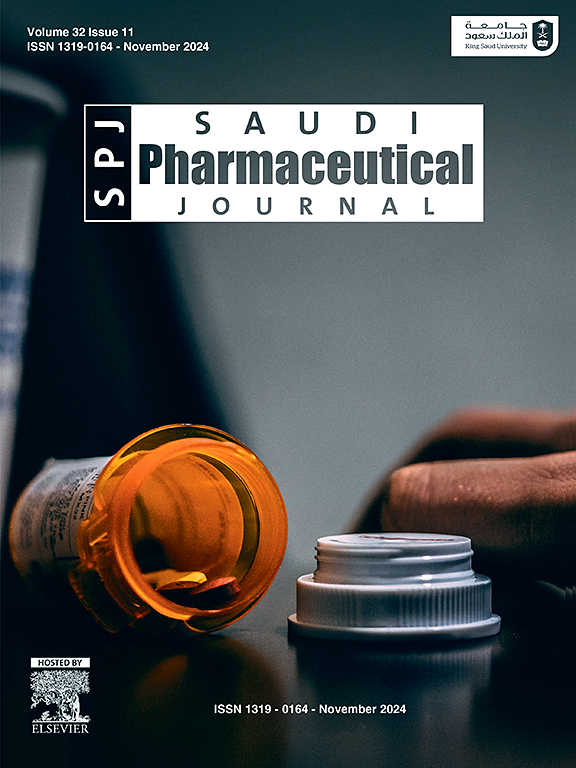Captagon: A comprehensive bibliometric analysis (1962–2024) of its global impact, health and mortality risks
IF 3.4
3区 医学
Q2 PHARMACOLOGY & PHARMACY
引用次数: 0
Abstract
Captagon is a synthetic stimulant combining amphetamine and theophylline. Initially introduced in 1961 as a treatment for hyperactivity, depression, and narcolepsy, Captagon was later classified as a Schedule 1 controlled substance due to its addictive and hallucinogenic properties. Despite its global prohibition in 1986, the trade of counterfeit products is widespread, especially in south-east Europe and far-east Asia, with its production being on the rise in Middle Eastern regions. This paper presents a quantitative data-driven bibliometric analysis of the existing literature on Captagon up to July 2024. It aims to delineate the structure and development of knowledge surrounding the substance, including key contributing countries, authors, prominent sources, and recurring thematic keywords. The quantitative and data-driven results were then used to guide the narrative discussion on Captagon. Findings indicate that current research predominantly focuses on Captagon’s use and impact in conflict zones, often exploring its interaction with other substances used by civilians and militias. Results also show a growing trend in Captagon research, with Saudi Arabia, Jordan, and Iraq emerging as main contributors to the literature. Despite the attention in specific regions, a considerable gap remains in understanding the mechanisms of action of Captagon (particularly regarding its metabolism, toxicology, mortality risk), and in developing protocols for its discontinuation. Additionally, the drug’s inconsistent composition requires further analyses to better predict risks and establish effective management strategies. Addressing these gaps will be crucial for the development of novel interventions and policies to mitigate the adverse effects of Captagon and improve public health systems worldwide.
Captagon:对其全球影响、健康和死亡风险的综合文献计量分析(1962-2024 年
卡普他酮是一种结合了苯丙胺和茶碱的合成兴奋剂。Captagon 最初于 1961 年问世,用于治疗多动症、抑郁症和嗜睡症,后因其成瘾和致幻特性被列为附表 1 受控物质。尽管 Captagon 于 1986 年被全球禁用,但假冒产品的交易却非常普遍,尤其是在东南欧和远东亚洲,中东地区的生产量也在不断上升。本文对截至 2024 年 7 月有关 Captagon 的现有文献进行了定量数据驱动的文献计量分析。其目的是勾勒出围绕该物质的知识结构和发展,包括主要贡献国、作者、主要来源和重复出现的主题关键词。定量和数据驱动的结果随后被用于指导有关 Captagon 的叙述性讨论。研究结果表明,目前的研究主要侧重于 Captagon 在冲突地区的使用和影响,通常探讨其与平民和民兵使用的其他物质之间的相互作用。研究结果还显示出 Captagon 研究的增长趋势,沙特阿拉伯、约旦和伊拉克成为文献的主要贡献者。尽管特定地区的研究备受关注,但在了解 Captagon 的作用机制(特别是其代谢、毒理学、死亡风险)和制定停药方案方面仍存在相当大的差距。此外,还需要进一步分析该药物不一致的成分,以便更好地预测风险和制定有效的管理策略。缩小这些差距对于制定新型干预措施和政策以减轻 Captagon 的不良影响并改善全球公共卫生系统至关重要。
本文章由计算机程序翻译,如有差异,请以英文原文为准。
求助全文
约1分钟内获得全文
求助全文
来源期刊

Saudi Pharmaceutical Journal
PHARMACOLOGY & PHARMACY-
CiteScore
6.10
自引率
2.40%
发文量
194
审稿时长
67 days
期刊介绍:
The Saudi Pharmaceutical Journal (SPJ) is the official journal of the Saudi Pharmaceutical Society (SPS) publishing high quality clinically oriented submissions which encompass the various disciplines of pharmaceutical sciences and related subjects. SPJ publishes 8 issues per year by the Saudi Pharmaceutical Society, with the cooperation of the College of Pharmacy, King Saud University.
 求助内容:
求助内容: 应助结果提醒方式:
应助结果提醒方式:


